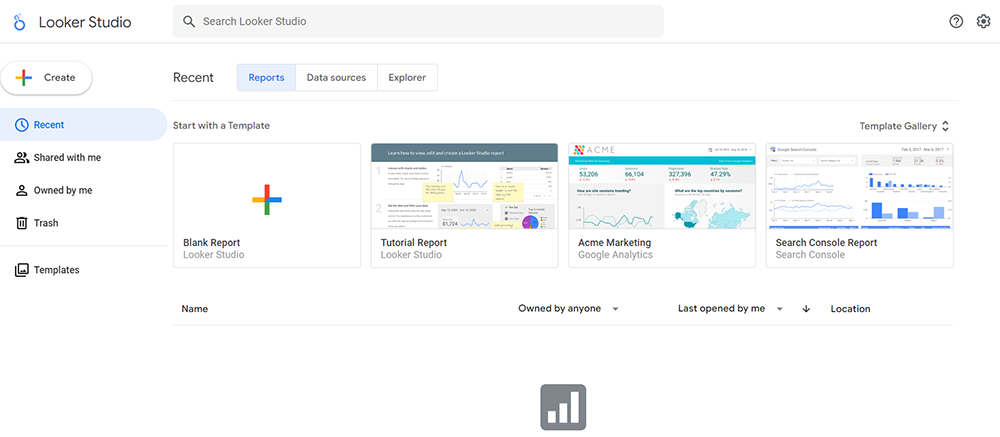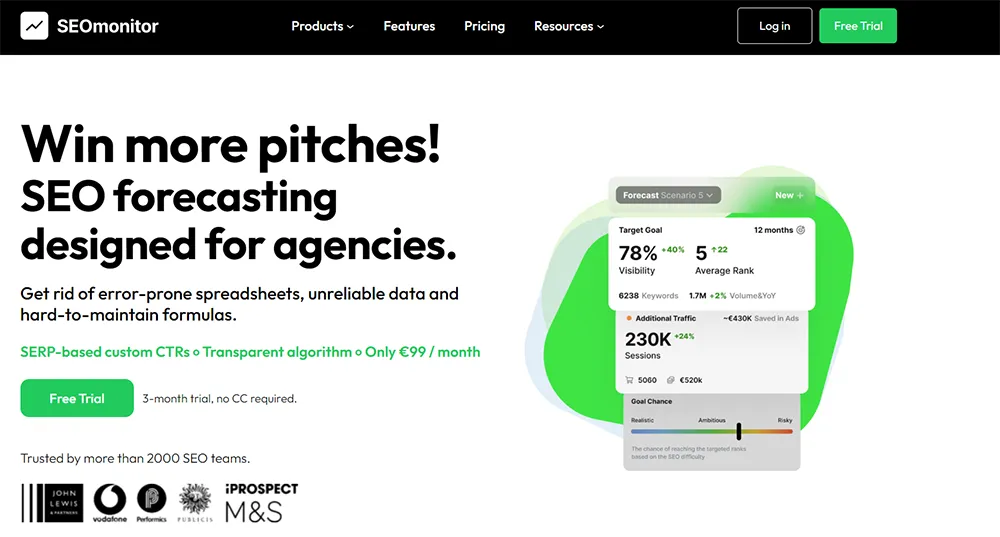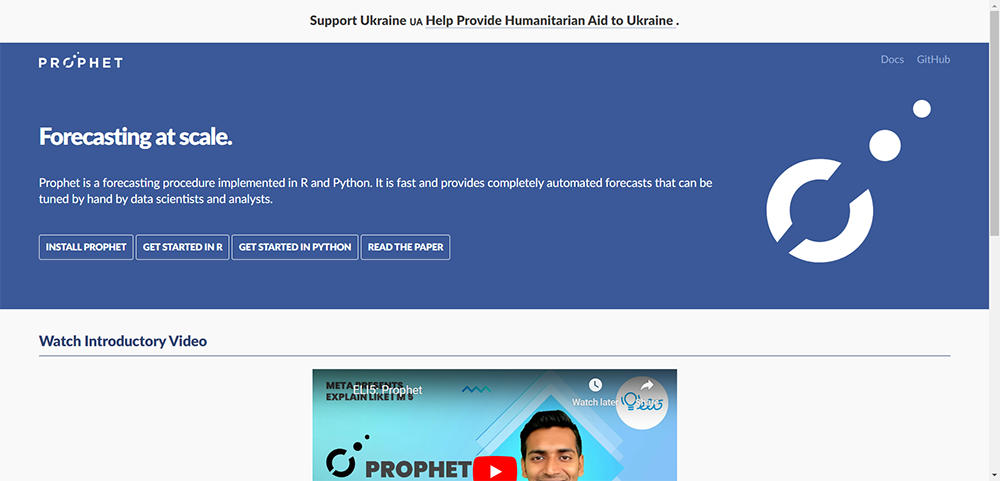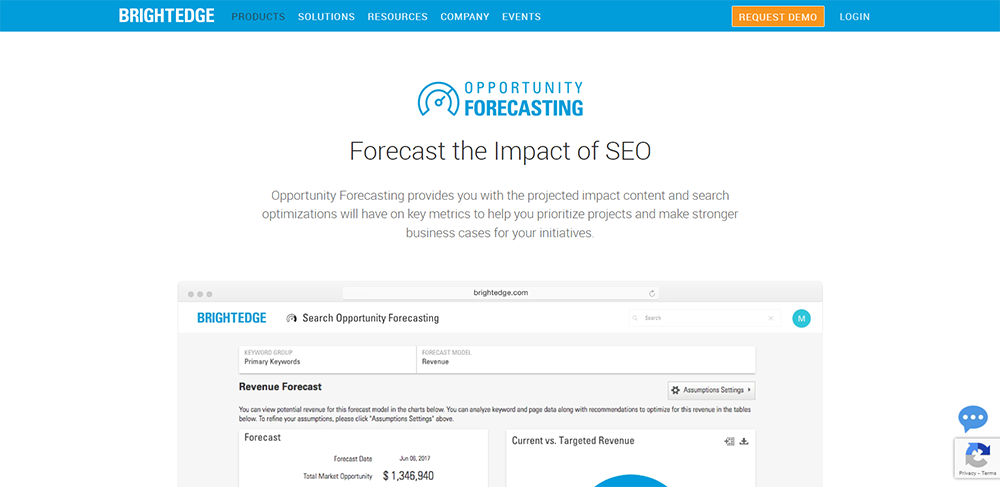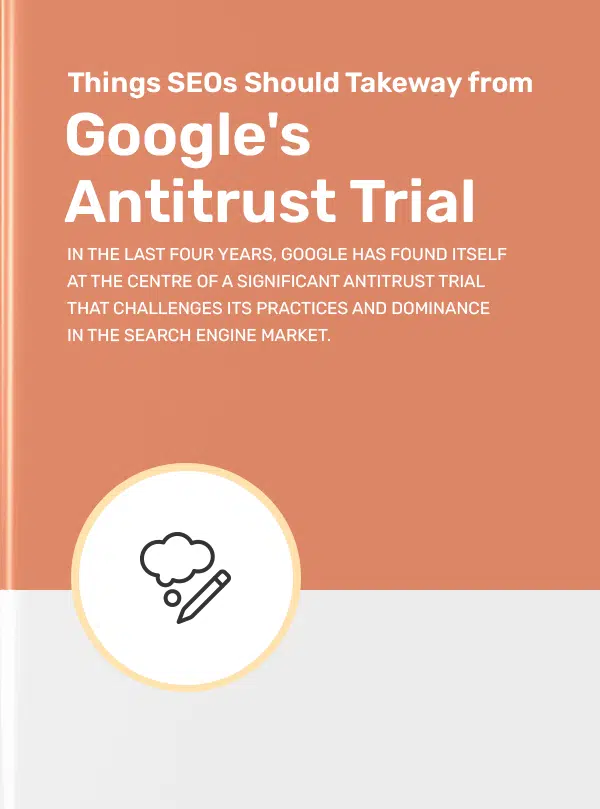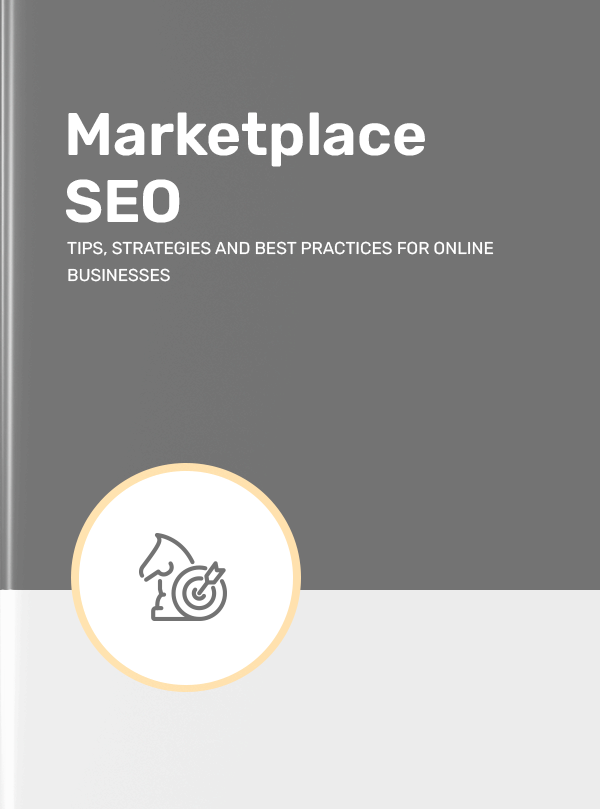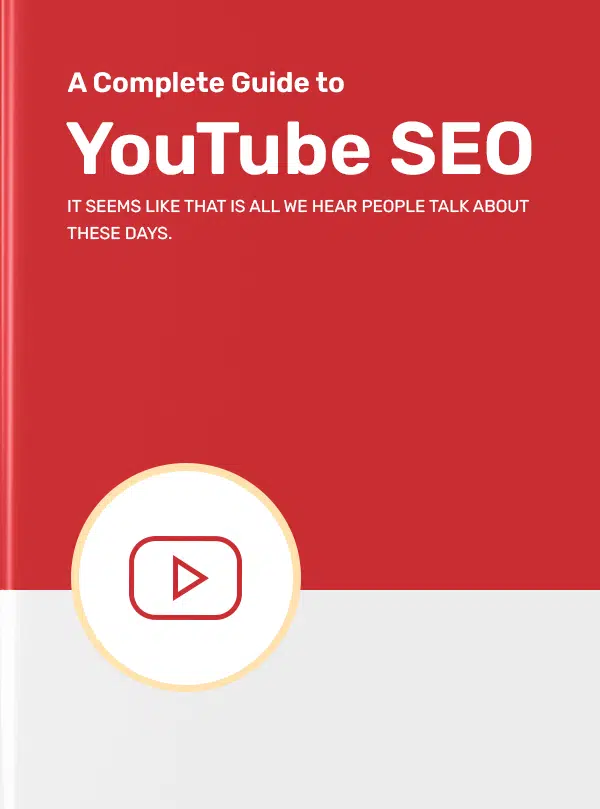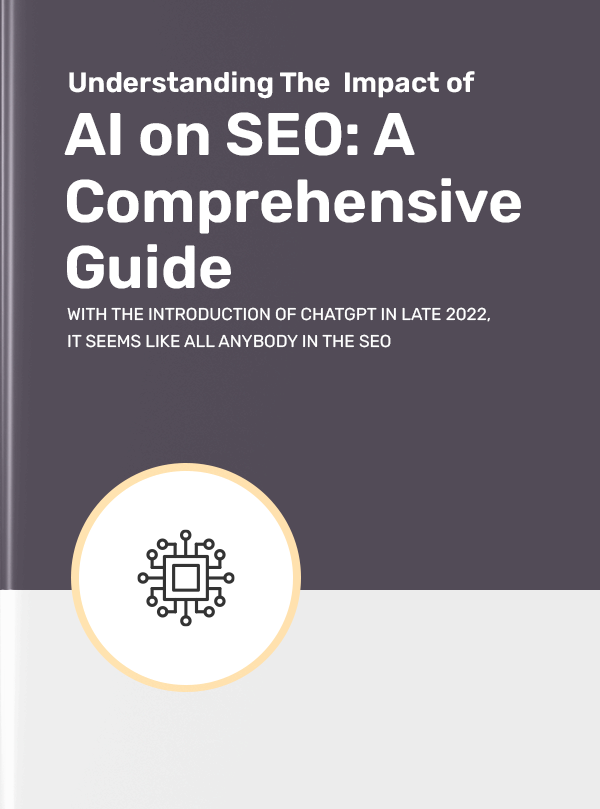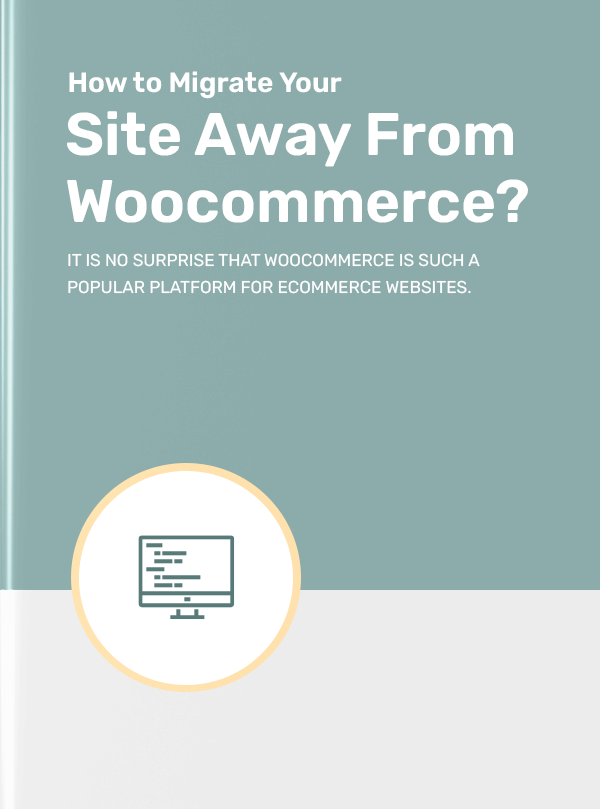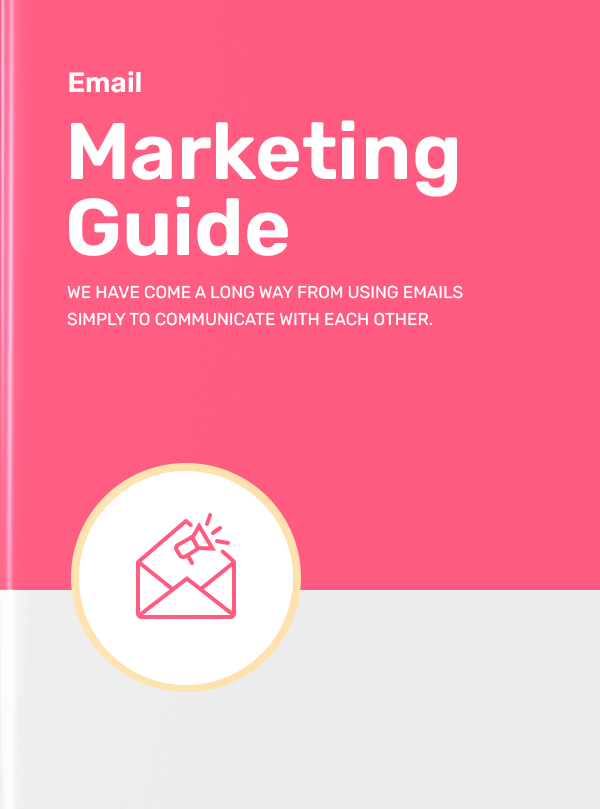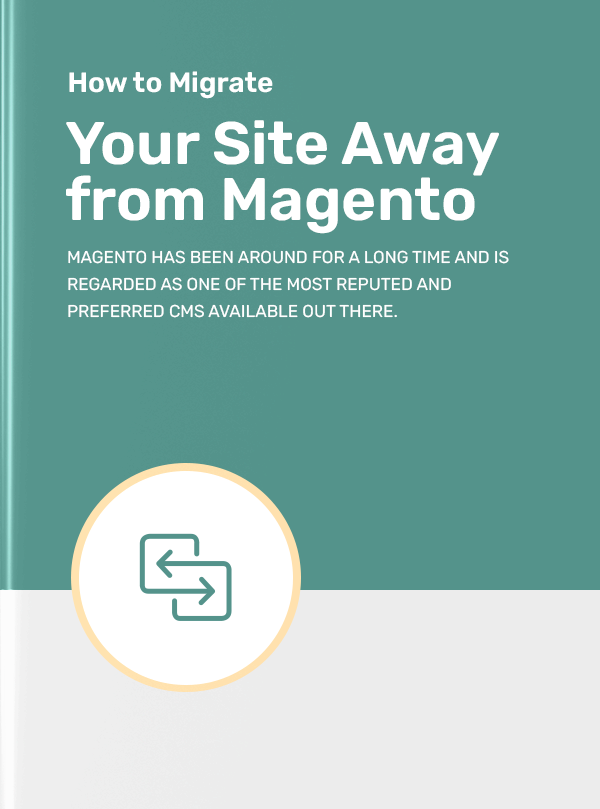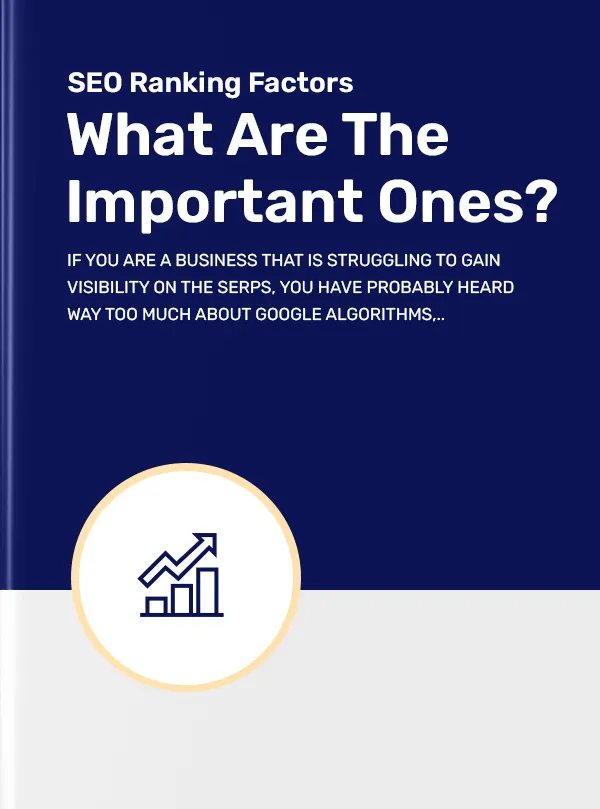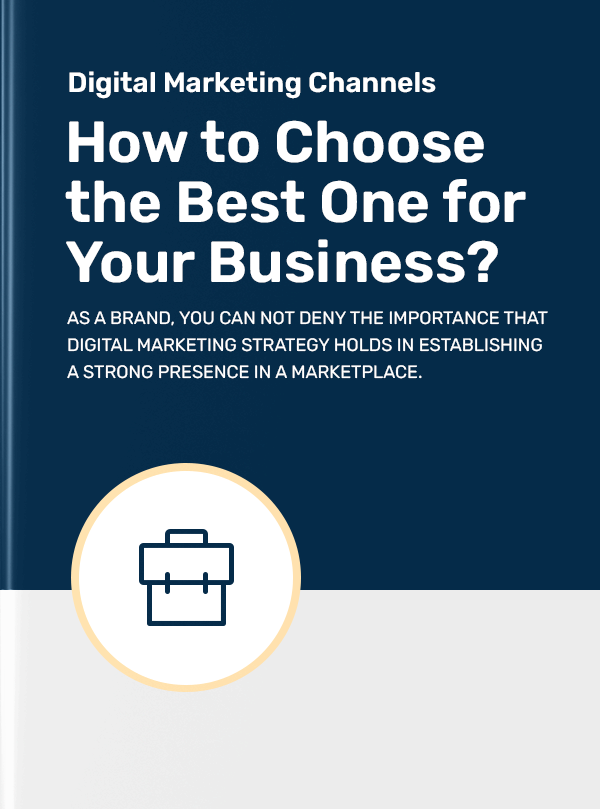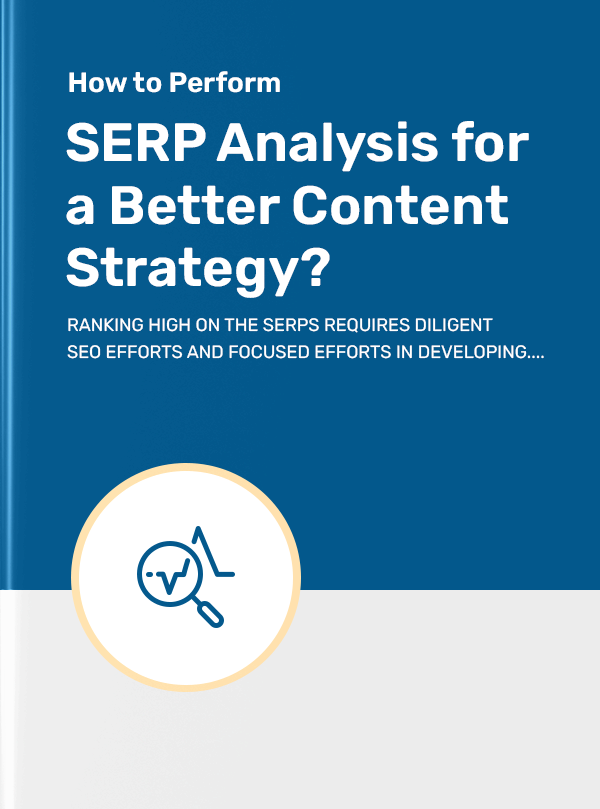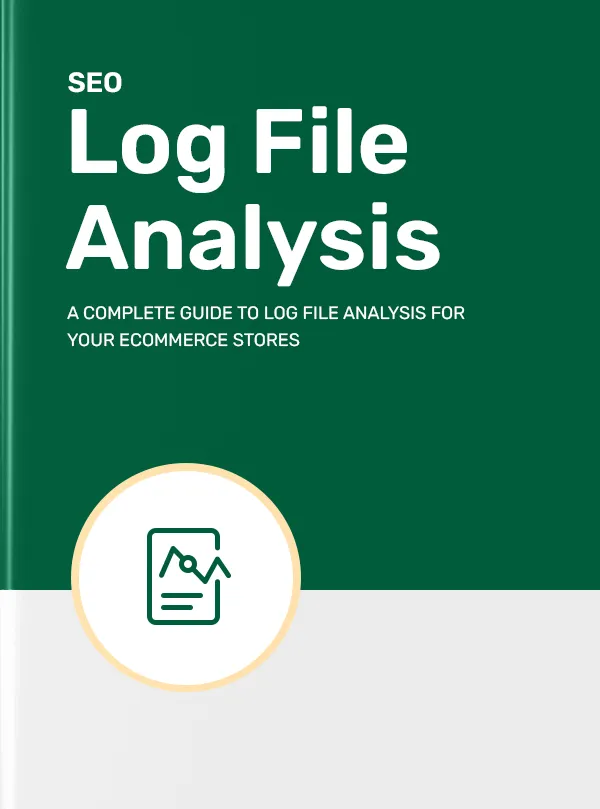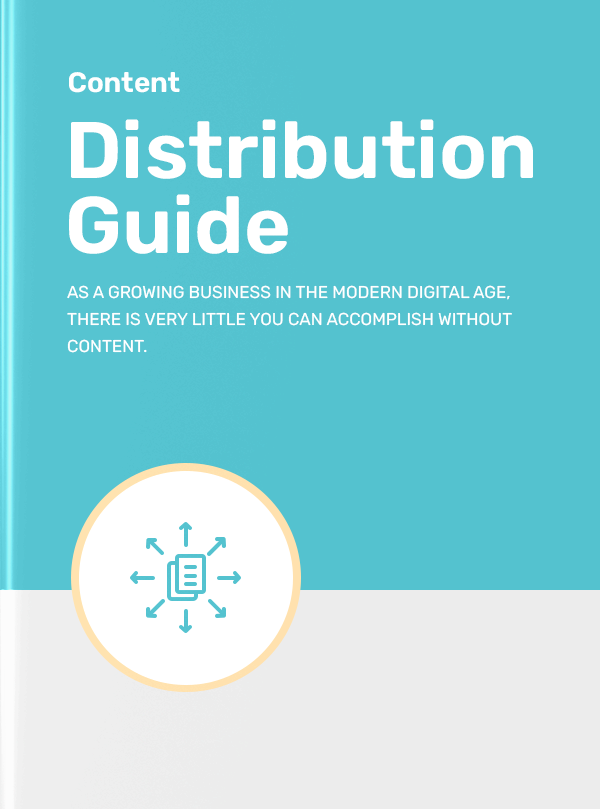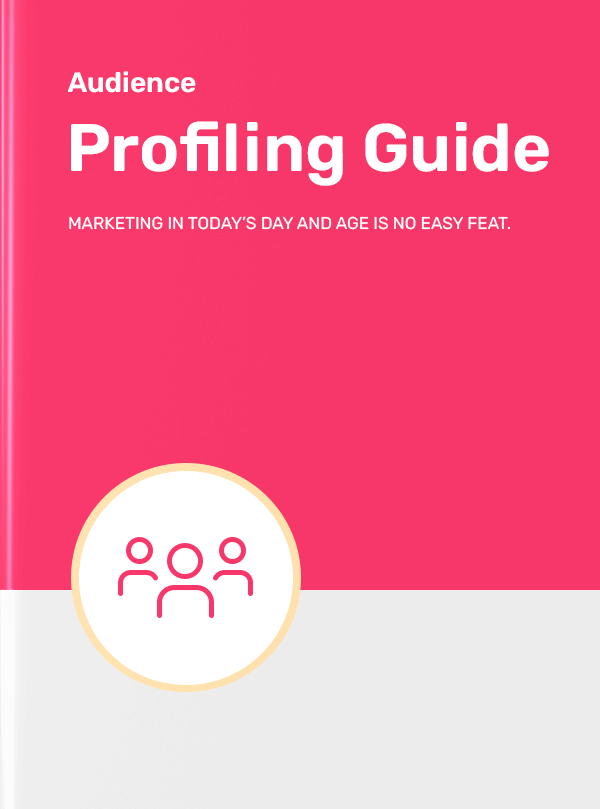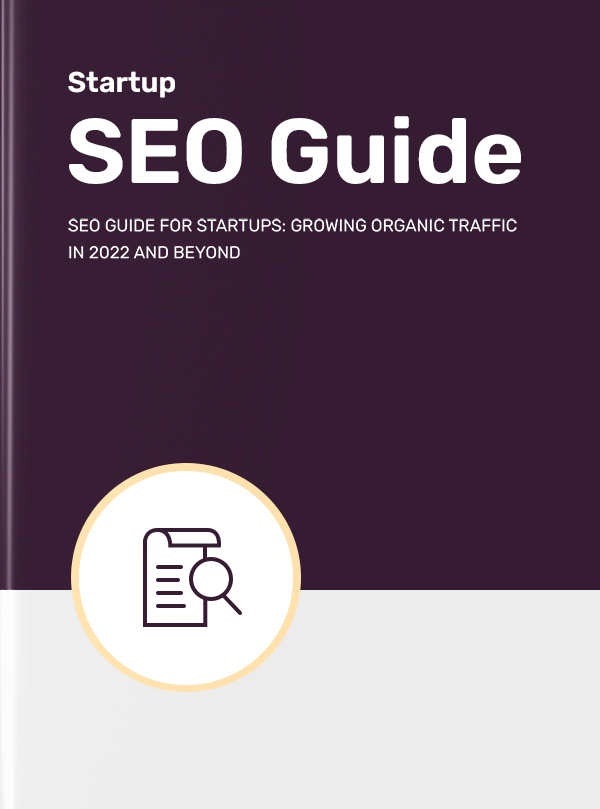Get a Free Seo Audit in Minutes
Get a Free SEO Forecasting: Everything You Need to Know About It SEO Audit in Minutes
SEO is one of those strategies that can give you more than your money’s worth if you are smart about it. You will need to start with having a clear picture of the role that SEO plays in your marketing strategy and efforts.
Your website is the most primary marketing tool that you have in the digital realm, so any amount of traffic and visibility you are able to bring it will yield positive results. With the help of SEO, you will be able to get your website to rank higher on the SERPs, which can in turn help you bring more potential customers to your website.
But if you have dabbled around with SEO at all, you know that it is a long-term strategy and requires consistent efforts. With that in mind, you will need to have predictions drawn up, just like you do for any strategy so that you can make business decisions and plan your investments and strategy accordingly.
For now, let us start with the definition of SEO forecasting, and everything it has to offer.
Your search engine visibility is an important aspect of your online marketing efforts. So, when you are working on your SEO strategy, you will inevitably need to leverage SEO forecasting. It is the process of estimating and predicting changes in your website visibility on search engines.
To get an accurate picture of your future SEO performance, you will need to consider multiple metrics such as organic traffic, keyword rankings, and more. With the help of effective SEO forecast reports, you will be able to make educated decisions that will help you optimise your search engine result pages (SERPs) more effectively.
If your website is comprehensive and has a lot of elements and pages that you are utilising to target customers, you are making a big investment on it. You may want to leverage SEO forecasting to predict how these elements and parts of your website are going to work in terms of bringing more customers to your website or boost your search engine visibility.
While it is more important to know where your website stands in terms of SEO performance at present, it is even more crucial to understand where it is heading in the future. With the help of SEO forecasting, you would be able to identify most of the potential problems in advance, and address them effectively.
You could introduce new strategies or create new types of content to address any issues that you predict from your SEO forecast. You can also track your progress and adjust your SEO strategy as needed, and stay ahead of the competition so that your website is always optimised for success.
While your SEO forecasts can predict multiple aspects of your strategy associated with economic trends or seasonality, they may not be able to predict your entire future SEO landscape and make your strategic decisions easier. SEO forecasts will also give you a clearer picture on the specific areas that you should be focusing on.
Now that you understand what SEO forecasting is, you should also know about the many benefits and advantages that it offers. Here are some of the primary ones that you should keep in mind, before you start relying on SEO forecasting:
To Gain Edge Over Competitors
A normal SEO strategy and a highly effective SEO strategy can be widely different from each other. It is important to remember that while you may have a lot of evidence of your service quality, so do your competitors. But your business’ ability to connect the dots and leverage SEO forecasting can give you that extra edge to surpass your competitors.
While SEO is now a widely known marketing strategy that a lot of companies are already leveraging, there are many that are not. But only some know that SEO is actually a great investment, and that clicks that you earn with SEO can even translate into money.
As a company, you will need an overview of how a keyword may perform in the future if you are basing any strategy or plan to generate desired results based on it. Such an effective SEO strategy can help you improve your SEO performance, and outcompete your top competitors on the SERPs.
To Improve Customer Relationships in Agencies
SEO agencies struggle a lot in convincing customers that specific strategies or actions are important. One can work really hard and still not be able to achieve that vote of confidence. Your in-house SEO or marketing manager can face similar challenges too.
With the help of an accurate SEO forecast report, you will be able to prove that your actions can lead to gaining new customers or achieving any specific desired goals. This will make it easier for related stakeholders to trust you more easily. This is even more possible if you want them to see the bigger picture i.e. boost in the revenue down the line.
Most importantly, SEO forecasts can ensure that your stakeholders are in on your SEO efforts and strategy right from the start, so you can manage better communication and relationships with them.
To Estimate Resources and Budget
If you work in a marketing team of a really good company, you will often find yourself fighting to get enough budget and resources for the strategies that you need to implement. Even then, you will find yourself falling short or having an excess of resources or budget at some point in the process.
SEO forecasting will optimise your expectations and help you allocate the right amount of resources required to achieve all the aspects of your SEO strategy.
Imagine this scenario: you work in the content team in a company, where the social media department has asked for a new resource. However, your video development team has also asked for a new resource at the same time. Now, your company only has the budget to hire one of these resources. How will you make the right decision?
This is where SEO forecasting can help you.
With the help of SEO forecasting, you will be able to assess which specific area of your marketing is likely to generate higher returns in a specific period. This will further help you understand how your resources and budget can be tweaked to get better results.
To Strengthen Your SEO Strategy
Another major advantage that you can get out of SEO forecasting is the value that it can bring to your SEO strategy. SEO forecasts can accurately predict whether the goals that you have set out to achieve are reasonable and achievable. You will also be able to derive important insights from the data generated from first-party and third-party sources, which you can use to tweak your SEO strategies.
SEO strategies are only as good as the results they are able to produce. With that in mind, it is important to assess the kind of results your SEO strategy is likely to produce in the future, so that you can ensure that your current strategy is positioned right.
What’s more, you will also need to measure important SEO success metrics and collect historical data, which will help you draw up patterns that will subsequently contribute to your SEO forecast reports.
SEO forecasting is a process that can be carried out using first party or third party historical data, especially aspects such as traffic value, click-through rate, traffic and search volume. The historical data of your website and SEO will help you analyse your past performance, and assess the kind of SEO tasks and strategies you need to implement for your future performance.
First Party vs. Third Party Data
In the case of most SEO forecasts, agencies and marketers utilise first party data sources such as Google Analytics or Google Search Console. These are also the perfect sources for you to generate accurate estimates for your website or web pages, with consideration to seasonality and increased granularity.
Basically, these first party sources are those that offer data and insights specifically into your website’s overall and SEO performance. However, it is important to remind yourself that your company does not exactly operate in a silo. If you are working hard on improving your SEO performance, so are multiple other competitors who are trying to rank better on the SERPs.
What we mean is, you would be able to get a better picture of your website’s performance compared to your competitors’ with the help of third party sources and applications. Utilising these crucial insights and data will help you make changes to your strategy and help you figure out where you will devote your resources.
At this point, you may have an important question - are third party sources as reliable as first party sources for SEO forecasting?
Well, the answer is simple - it solely depends on the exact goals you are trying to achieve. If you are looking for accurate estimates with daily granularity and seasonality to make your forecasts stronger, you can use first party sources. But if you are looking for powerful patterns, and forecasting trends, to ensure that the average volume data is useful in drawing important conclusions.
Other than these distinctions, you will see that first party and third-party sources are updated at equal frequencies. They are also likely to provide you with the most recent and real-time data on the basis of which you can generate the graphs and performance charts. Third-party sources such as Ahrefs and SEMrush also utilise previous and historical data to update graphs, and remove irregularities as you go.
Now that we have got the basics of what SEO forecasting is, and how it contributes to your SEO strategy out of the way, it is time to delve deeper. Let us explore the two primary types of SEO forecasting that you should know about.
1. Keyword Forecasting
The first SEO forecasting method that you should know about is one that utilises keyword rankings to estimate the future trends. For this type of forecast, you will need to use keyword research and monitor it over time, so that you can identify any changes to keyword performance on SERPs, and accordingly adjust your SEO strategy.
Say, you sell plumbing products on your Shopify website. Even though your store in Sydney is working just fine for your business, your website needs to attract online customers. When you want to start tracking keywords, you will need to narrow down the key terms that potential customers might use to find your products. These terms may include “premium rain showerheads”, “basin faucets”, or “basin tap in gold finish”.
You can use a keyword tracking tool to keep track and monitor how each of these keywords will perform on the SERPs over a certain period of time. When you analyse this data, you will be able to make data-driven decisions, and optimise your website content, as well as improve your search engine visibility.
Pros of Keyword Forecasting
- Keyword forecasting is a fairly easy forecasting method to set up and can can be carried out quickly
- With the help of a robust keyword tracking tool, you will be able to track changes in keyword rankings easily over time
- You will be able to track SERP changes, and allows you to take immediate actions accordingly
Cons of Keyword Forecasting
- Even if you try your best, there is a good chance that you may miss out on some of the important relevant keywords when tracking
- The accuracy of your results will largely depend on how accurate your keyword tracking tool is and how well it works
2. Statistical/Analytics Forecasting
The other SEO forecasting method is that of basing it on the analytics and statistical information that you are able to generate out of web analytics and SEO tools. As a preliminary step, you can analyse website data collected from Google Analytics to generate insights on user behaviour, traffic, and conversions.
A comprehensive analysis and objective look at your website will help you understand if their experience and interactions with your website align with the goals that you have set out to achieve. Doing so will help you optimise your website so that it ranks well on organic search, and boosts visibility for potential customers.
Say, you have a fashion store in Melbourne, and also sell your products on your WooCommerce website. You track your website performance using a web analytics tool to find out that your website generates a lot of traffic on desktop and computers, however, it lacks in mobile performance. To improve your mobile user experience, you can invest in making your website design more mobile-responsive, improve your site speed and even work on simplifying the navigation menu.
If you have been using GA3 so far, you can start getting acquainted with GA4 or any of the other web analytics tools so that you can leverage their features and capabilities to generate useful insights about your website performance.
Organic Forecasting
Organic forecasting refers to an SEO forecasting method that primarily relies on measuring and tracking organic metrics and aspects of your website. These factors can include your organic traffic, conversions, and other aspects that do not require you to make any additional monetary investment.
By tracking these metrics, you would be able to understand the kind of results you are able to generate organically, and are likely to generate in the future.
CTR Forecasting
CTR (click-through rate) forecasting, refers to forecasting the likelihood of having a specific element on your website be clicked. This element could be a call-to-action button, an advertisement banner, or any specific part of your website that you want your users to click on to lead them towards a conversion.
For the uninitiated, CTR is the ratio of the clicks you get on your ads and the impressions you generate on them.
This particular type of prediction is important so that you know whether a specific advertisement or element actually has the potential to generate the kind of results you desire. For instance, you may be running a lot of paid ads to gain some extra traction for your asbestos removal business in Darwin. But CTR prediction will allow you to understand whether these advertisements will actually be clicked by potential customers in your local community.
Pros of Statistical Forecasting
- Generates valuable insights into website performance and user behaviour
- Helps you identify potential areas of improvement and optimisation
- Enables you to make data-driven decisions aimed at better SEO strategy and content creation
- Gives you a better understanding of your target audience, their needs and preferences
- Allows you to track some of the most important key performance indicators (KPIs) and return on investment (ROI)
Cons of Statistical Forecasting
- It requires you to invest considerable amount of time, resources, and expertise even to set up and carry out initial management
- If you do not have a clear objective, it can take a toll on you and easily get overwhelming or confusing
- Factors such as changes to search engine algorithms or user behaviour that are out of your control can easily influence your data
Now that you have all the background know-how of SEO forecasting, let us get into the actionable part.
After all, the benefits and types of forecasting are fine, but when you get to it, how do you actually go about carrying out SEO forecasts for your business website?
Well, there are simple ways and complicated ways to go about the process, but in this guide, we will talk about the two major approaches that you can deploy.
Approach 1: General Estimation
The first forecasting approach is actually quite straightforward — you consider historical data and benchmarks to analyse and estimate the future performance. The logic behind this is to collect indications of what will happen in the future if the same efforts that you put in the past are consistently maintained.
For instance, if you have been able to see that your website’s organic traffic has grown by 10% in the past year, you can confidently say that the SEO efforts that you have been undertaking have been successful. So, if you consistently carry out the same efforts and actions, you can predict similar results from your website in the future.
We are fully aware that the example that we have mentioned right now does not include any competition-related data or insights, which would be otherwise considered in the process. We simply emphasised on the aspects that you could look into if you use just first party data.
However, you can also use popular SEO tools such as Ahrefs and SEMrush to collect third-party data about the recent trends, and competitors so that you can equip your SEO forecasts with even more useful data.
Let us now look at a five-step process that you can follow to successfully implement the General Estimation approach to SEO forecasting.
Step 1: Create a Keyword Cloud
Your business keyword cloud is one that contains all the keywords and phrases that your potential customers are likely to use to search for your business or the products/services that you are offering.
So, if you have an HVAC services business called ‘ABC01 HVAC Company’ in Canberra, your keyword cloud is likely to contain keywords such as “ABC01 hvac services canberra”, “hvac services in canberra”, “top hvac services in canberra”, “hvac duct repair services in canberra”, and more.
While you will be able to attain a wealth of keyword data from popular keyword research and SEO tools, you should also rely on your client-facing teams for more specific information. You may also want to stay clear of too much jargon, and talk to your customers to understand their search behaviour.
More importantly, to get the best insights, delve into the keywords that your website is ranking for over the past 12 months, and assess the current performance. This will help you figure out how these keywords are likely to perform for your website in the foreseeable future.
Step 2: Collect Traffic and Search Volume Related Data
Once you have your most crucial keywords narrowed down, you want to dig deeper into the data around it, through the SEO tool or keyword research tool of your choice.
One of the key factors that you want to consider in this regard, is the average search volume associated with these keywords that you have selected. This will let you know just how much of your organic traffic you can increase by capitalising on these keywords. Keep in mind that the keyword search volume will also fluctuate based on purchase trends and seasonality.
For example, a term like “christmas ornaments” or “christmas gift ideas” might spike around December, but remain low for the rest of the year.
The Cost-per-click (CPC) data associated with your keywords are also major indicators of the market value of these terms. But keep in mind that this data will not give you much of an outlook on your business. You will also want to get a better idea of your organic CTR for these keywords, and deduce the potential traffic volume that you can attain by leveraging them.
Step 3: Calculate Your Conversion Rate
Now that you have a fairly good estimate of your potential search volume, you can go ahead and start determining what counts as a conversion for your business. For every business this differs slightly. For a SaaS business, getting subscriptions may count as a conversion, whereas for an eCommerce business, conversion may be in the form of a product sale, or a signup.
Specific actions that describe what you want your website visitors to take, that will generate revenue or value for your business, can be counted as conversions.
The percentage of visitors or users that take these specific actions on your website will add up to your conversion rate.
Step 4: Trace the Journey from Conversion to Sales
As we just discussed, conversions can take different forms and may look different for your business than it does for others. Leads are important but they do not always turn into sales, and the journey from the point of conversion to getting a sale is an important one. This is the part where you want to nurture and closely guide the customer towards making a purchase decision.
To get a better idea of this, find the percentage of leads generated by you that actually turn into paying customers. You may also want to consider the lifetime value of your keywords at this point.
A few critical questions that you may want to address in this regard are:
- How much revenue does your business earn when your leads make a purchase?
- Do your sales take the form of a one-time purchase or repeat transactions?
- What is the motivating/demotivating factor for your leads while making purchase decisions?
- How much do your customers spend on each of your purchases?
- What is the lifetime value of a specific lead that has turned into a paying customer?
Considering all of these aspects, will also give you a better idea of the potential results that you will be able to generate from your SEO campaign.
Step 5: Create an SEO Forecast Accordingly
By the time you calculate your conversion rate, you will have a bunch of crucial numbers to work with. Once you have the calculations ready to be mapped over a certain period of time, you will be able to make safe assumptions and predictions about your SEO performance in the future.
However, keep in mind that these are merely predictions based on the data that you have collected, and not accurate performance indicators. These are just one of the many outcomes that may be generated in the future.
Take the performance of your key SEO metrics at their face value, as your actual performance may be better or worse depending on other factors. Ensure to tailor your expectations based on the estimates that you generated as a part of your SEO forecast, as well as your business and revenue goals.
Whether you are managing your SEO campaigns in-house or through an expert SEO agency, try to standardise this process to make your forecasting easier. In this process, you should also consider your content marketing efforts, analysis of competitors on the SERPs.
Follow this aforementioned 5-step general estimate forecasting process for a simple yet elegant SEO forecast to empower your marketing and business decisions.
Excel/Google Sheet Template For Forecasting
The other approach that you may want to consider for generating an accurate SEO forecast is by creating a template for forecasting. As such, even if you follow the other approach, it is recommended that you create a standard template format, however, this approach requires advanced spreadsheet skills and may require an expert to implement.
You can consider this approach in case you have an in-house SEO expert, or have associated with an SEO agency for implementing your strategy.
Remember how we talked about the two methods of SEO forecasting namely, keyword forecasting and statistical forecasting. Well, when you work with Google Sheets/Excel to come up with a template, you can truly leverage the powers of both the approaches.
Before you start creating a template, make sure you have the prerequisite tools ready to use. You will need Google Analytics and Google Search Console. You will also need an additional web analytics tool such as SEMrush or Ahrefs to do other analyses that might be required to create a comprehensive forecast report.
It also helps to keep some of the data ready before you start with the template. Here are the three crucial types of data that we have discussed about, that should be included in the template:
- CTR (Click-Through Rate)
- Organic Traffic
- Keyword-related Data
You can also include additional parameters that you deem important such as data related to backlinks and competitor analysis.
Now if you are all set with the prerequisites that we have jotted down so far, let us get on with creating the template.
Step 1: Set up Your SEO Forecast Template
When you are creating a spreadsheet to standardise the way you conduct and record your SEO forecast, you need to have a standard format that you can consistently follow and expand upon.
Make a copy of this SEO forecast template to get started. You will see that there are three worksheets that will help you track the three major parameters that we discussed earlier.
Step 2: Collect Your Historical Data
Once you have the template set up, it is time to start utilising it and start going through the data that you have collected from various tools and sources.
Next, open up the forecasting template, and go to the “Historical Data” worksheet. Here, you will want to update the periods that you want to track for your business, as well as the organic traffic in those months.
You will be able to find your organic traffic from Google Analytics, and adjust it for each month while removing the bot traffic.
To be able to draw up a good and comprehensive forecast, you will want to consider and compile data from at least two to three years. Of course, you will not have this much data at your disposal if your website is relatively new, and in this case, you should consider as much data as you can find.
Step 3: Consider Seasonality and Other External Influencers
When you want a fairly accurate picture of your SEO forecast, you need to consider important factors such as seasonality and other externalities that might influence your future SEO performance.
For understanding the impact of seasonality, start with asking yourself if your website experiences fast and slow months. This will depend on the business you run, so if your website sells sweaters and snow boots, you are likely to see your sales spike up during winters, whereas summers and other seasons will be comparatively slower.
You may also want to pay attention to specific outliers which are basically data points that are significantly lower or higher than the rest of your data set. These outliers may be present for many different kinds of reasons. For example, you may have run a successful online marketing campaign that may have caused a sharp boost to your traffic and sales. Or your website might have been hit by an algorithm update, causing your ranking to plummet, and with it, your traffic.
Since such events are singular instances that may not take place again, you would ideally want to eliminate them from your data set. Your SEO forecast will turn out to be quite skewed or inaccurate if you do not get rid of this data.
Alternatively, you can also replace that data point with a more realistic one based on the months leading up to it or after it.
Step 4: Draw up an As-Is or a No-Change Forecast
A forecast can be termed as no-change or as-is, if it denotes the kind of future performance you are likely to generate if you do not change anything major in your SEO strategy. Basically, this forecast will let you know the kind of performance your website can generate if you keep your SEO strategy exactly the same.
You will be able to get the no-change forecast in the “Forecast” tab of your SEO forecast template. Simply copy your dates and traffic from the “historical data” tab and adjust them based on the month that you would want to initiate your forecast from.
Step 5: Include Average CTR and Keyword Volume
While drawing up a no-change forecast requires you to leverage statistical forecasting, we will add keyword forecasting only at this stage. You have the option of leveraging the CTRs mentioned in the CTR tab of the spreadsheet, or you can also update them on your own with more numbers with the help of your website data.
You will now update the CTR tab of your spreadsheet with your target keywords, and along with it, include your monthly search volume, and your current position in the respective columns.
Step 6: Draw up a Traffic Forecast for Various Ranking Positions
The organic traffic to your website can be gauged once you start ranking on the SERPs for your targeted keywords. You can calculate the organic traffic by deriving the product of each keyword volume and the CTR of each position.
It is important to keep a track of your keyword movement, and smooth out the growth trend of your keywords, by adding the accurate positions into the forecast and monitoring it over a specific period of time.
With the help of this data, you will also be able to calculate the estimated traffic that you can get using each keyword, which will further help you draw up a traffic forecast for each position.
Step 7: Integrate your total potential traffic from Keywords
Revisit the “Forecast” tab on your SEO forecast spreadsheet and update the column of “Keyword movement” by adding the total keyword movement to the no-change forecast. The decision of the numbers that will be added at this point will completely be in your hands and you can make these calculations by reviewing the data that you have collected so far.
You can keep updating the performance that you predict from your website over a certain period of time in the specific columns that mention numbers, and this movement will be reflected and represented in the chart inserted within the template.
You will keep updating the numbers associated with the keywords in the search results, based on the actual performance in the search results. You will also want to make adjustments accordingly to your click-through rate.
Now that you have learned everything there is to know about SEO forecasting and the various ways in which you can carry out the SEO forecast. Considering all the points discussed so far, here are the most important metrics that you should be tracking so that you can get a fairly accurate picture of your SEO performance in the future.
Organic Traffic
Organic Traffic refers to the number of visitors who end up on your website by clicking on the organic search results. You will need to track this particular metric closely, because the greater your organic traffic, higher the potential of getting potential customers. Your organic traffic will also tell you more about the pages that are performing well, and the ones that require more improvement.
For instance, a detailed guide that you may have posted on your SaaS website might be attracting a lot of organic traffic. This tells you that you should be posting more content around this specific topic.
Keyword Rankings
The SERP position on which your website ranks for a specific keyword is termed as its keyword ranking. This metric is important in gauging which specific keywords are performing well for your website, and which ones are unable to generate the desired results.
You will need to track your keyword rankings over time, to get a better understanding of how your website is performing for specific keywords. Doing so will also increase your chances of winning a SERP feature for your website.
For instance, if you notice that your website is not able to rank well for a specific keyword that is valuable for your business, it is an indication that you should create more useful and valuable content around the specific keyword.
Bounce Rate
There would be many visitors who visit a specific page on your website but then leave it without visiting any other page or taking any specific action on the website. The percentage of such visitors on your website can be termed as your bounce rate. If your website’s bounce rate is too high, the user experience that you are delivering might not be at par with their expectations.
By analysing your bounce rate, you will be able to narrow down the specific pages that are making your visitors leave, and make improvements to them.
For instance, you may be able to successfully bring visitors to a specific landing page on your website.But even then, you might be unable to motivate them to take any action on the page or website. This means you will need to make tweaks so that you can create a more conversion-worthy landing page.
Backlinks
Backlinks as a metric refers to links that are on other websites and pointing to your own. Backlinks are considered to be important signals to Google that the content on your website is authoritative, highly valuable, and credible. With a detailed backlink analysis, you will be able to identify the specific websites that are linking to your content as well as make adjustments to your strategy accordingly.
For instance, if you spot that you have been able to receive a lot of backlinks from a specific authoritative website, you can put proactive efforts in acquiring more links from that website.
Domain Authority
Domain authority is a crucial metric that you need to consider when gauging the credibility, expertise and authoritativeness of your website. Websites spend a lot of time, money and other resources in the endeavour to boost their domain authority.
Domain authority is important because websites that score high on metric get a higher preference of ranking better on the SERPs. In general, the domain authority score suggests the likelihood of a website ranking on the SERPs.
You will also want to consider this metric when deciding the websites that you want to target backlinks from. A website with higher domain authority will have more valuable link juice to pass on to your website.
The next part of this guide is all about understanding the best practices that you should follow when you are carrying out your SEO forecasts.
As an important part of your SEO strategy and implementation efforts, you will need to ensure that you draw up accurate SEO forecasts that can give you and all the stakeholders involved in the process, a better idea of what to expect in the future.
That said, here are the best practices that you should follow to get better results out of your SEO forecasting:
Collect Comprehensive Data to Generate Accurate Findings
If you have conducted any kind of data analysis, you know how dangerous it can be to base your assumptions and crucial decisions on limited datasets. When you are trying to make forecasts about important marketing strategies such as SEO, you will need even more accurate and comprehensive data to derive predictions and forecasts.
A comprehensive dataset with extensive data and insights over a large period of time, will help you generate more accurate findings and predictions for your future SEO performance. You will also need to keep ensuring that you remove any kind of external impact from the numbers so that you can use the actual numbers for making predictions and not just specific numbers influenced by trends, or specific campaigns.
Create Periodic Reports to Analyse Later
Rather than draw out comprehensive and complicated forecasts over a longer period of time, it is more beneficial to create shorter and periodic forecast reports. Doing so will help you avoid confusion or deal with too much data at one point.
More importantly, SEO forecasts are subject to change based on algorithm updates, specific SEO campaigns or marketing activities, and even external market conditions that have nothing to do with your SEO efforts.
If you create an SEO forecast today, but any of the aforementioned factors have an impact on your performance in the upcoming weeks or months, your predicted performance may not match the actual performance. By conducting periodic SEO audits and tweaking your report accordingly, you will be able to ensure the accuracy of your predictions for the most part.
You will be able to analyse these reports at the time they are generated or even keep them saved and come back to analyse them at later stages.
Seek Expert Assistance if Required
SEO forecasting is one part of your SEO strategy that requires you to have a considerable amount of insight into the field of SEO and aspects related to it. With that in mind, it may be a good idea to find an SEO expert for your team or outsource the process to an adept SEO agency.
Ideally, you want to go for an experienced and seasoned SEO agency or expert, as they will have a better understanding of the factors that impact SEO forecasts, and how they can be used to improve your SEO performance and strategy.
With us so far? Great!
Along with the right SEO forecasting processes, and the right resources to carry them out, you will also need to be equipped with the right tools. There are several SEO forecasting tools that you can leverage to get powerful insights into your future SEO performance, and easily use to produce desired results.
After all, your SEO strategy is important to your marketing performance, and can help you empower your website to generate better results from it. Here are some of the primary tools that you should know about and possibly think of using for creating and implementing your SEO forecasts.
Google Looker Studio
Previously known as Google Data Studio, Google Looker Studio is a great tool to consider for your SEO forecasting needs. It is an online data visualisation software that will help you create engaging and informative reports equipped with insights, out of data. When you are collecting all your search engine and SEO-related data and analysing it manually, Looker Studio can help you compile it easily to generate attractive data visualisations.
You would be happy to know that Google Looker Studio seamlessly integrates with first party as well as third-party analytics tools alike. This means you will be able to effortlessly get data from sources such as Google Search Console, Google Analytics, Google Ads, and SEMrush or Ahrefs. You will be able to then leverage this data to create comprehensive reports and interactive dashboards using charts that can be customised and shared easily.
While the interface of Google Looker Studio is quite simple and easy to use, you would want to have a suite of marketing and SEO tools that you can fetch data from.
Who Should Use the Tool:
- You do not have any or very minimal programming knowledge and experience
- You are not that great with technical SEO and related concepts
- You have extensive experience handling data while conducting business analysis
- You want to create engaging and attractive visual data representations
Pricing: Free (with Google Cloud Platform)
SEO Forecast by SEOmonitor
SEO Forecast by SEOmonitor is a great tool for agencies and companies that deal with a lot of datasets and comprehensive data analysis and visualisation needs. Regardless of the specific data points that you would like to map and consider for your analysis, SEO Forecast offers several features that can help you out in the process.
Some of the most crucial features that you can expect are related to selecting the right keywords, selecting ranking goals, estimating sales and traffic, creating a precise CTR curve, and leveraging error-free search volumes.
Who Should Use the Tool:
- You are an SEO expert working in an agency serving several clients
- You conduct a lot of SEO forecasts periodically or frequently
- You want to explore different types of forecasting methods and report templates
- You want a simple and scalable SEO forecasting software
Pricing: Base Plan at €99 per month (Free Trial Available; Add-ons available)
Prophet by Facebook
Developed by Meta’s Core Data Science team, Prophet is an open-source library. This library helps you to create great forecasts for different kinds of datasets. Prophet utilises an additive model where non-linear trends are analysed, with consideration to seasonality, holiday effects, and more.
It can be downloaded from CRAN and PyPI. Prophet is a popular alternative for conducting SEO forecasts because of its accuracy and reliability, ability to create customised forecasts, and its fully automatic nature.
Who Should Use the Tool:
- You are familiar with using programming languages and development techniques
- You are especially interesting in seeking out the patterns in your data caused due to holidays and special events
- You do not require very rich visual data representations
- You have a simple dataset to work with
Pricing: Free (with Facebook’s Open Source Community)
BrightEdge’s Opportunity Forecasting
BrightEdge is a very well-known company in the field of SEO and content marketing. BrightEdge has been a strong player and offers several advanced SEO tools to help empower SEO strategies and campaigns for various kinds of businesses - especially the ones looking to grow and scale up.
Opportunity Forecasting as a tool enables you to gauge the kind of impact that your content and search engine optimisation techniques can have on your key metrics. The solution also offers predictions related to overall traffic, keyword performance, revenue and other important business areas.
The backend system or model of Opportunity Forecasting uses its very own in-built custom data model to generate specific insights and observations about the predicted performance of your website and your business.
Who Should Use the Tool:
- You want a forecasting software that will take care of all your requirements once you feed the data
- You will require additional services and features regularly
- You do not want too much control over the tool and are more focused on automating the process
Pricing: Custom Pricing
Every SEO strategy requires a present and future outlook to have a holistic impact on your marketing efforts. As a marketer, you would want to know how your website is performing at present, and how it is likely to perform in the future if the same SEO efforts and strategies are implemented. This will also tell you what tweaks or additions you may need to make to your strategy.
If you need any extra assistance in creating SEO forecasts for your website, and implementing them, contact us. We would love to learn more about your business and help you with our expertise and experience.
What is SEO forecasting?
The process of predicting the future performance of your website based on the data, trends and performance of the past and present is known as SEO forecasting. You will basically consider the most important metrics or indicators of your SEO performance and analyse your performance over a specific time period to understand how your website is likely to perform in the future.
Why does SEO forecasting matter?
SEO forecasting will help you create better-performing SEO strategies and help you understand if your current performance is up to the mark. It will also help you understand the amount of resources you are going to need to execute an effective SEO strategy, and improve customer relationships.
More importantly, if you have an SEO forecast ready, you would be able to tweak your current strategy and ensure that you achieve the desired results in the future. Moreover, you will also be able to gain a significant edge over your competitors.
Why is SEO Forecasting Difficult?
SEO forecasting as a process can require many different types of datasets and analysis on your part. You will be considering your website analytics, keyword performance, ranking data and more, to have enough information to derive insights about your SEO performance.
Considering that you may have to extract data from multiple sources, eliminate any outliers or seasonality first, and then thoroughly analyse them, SEO forecasting can be a complicated process.
What is Search Forecasting?
Search forecasting is the specific process of predicting how the organic traffic of your website will look like in the future. Search forecasting is done on the basis of hard data extracted from the past and present performance of your website, and should never be based on best guesses or assumptions.
